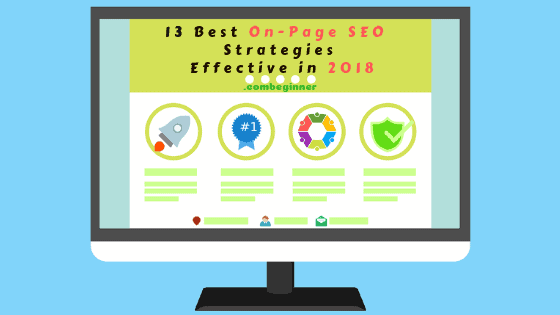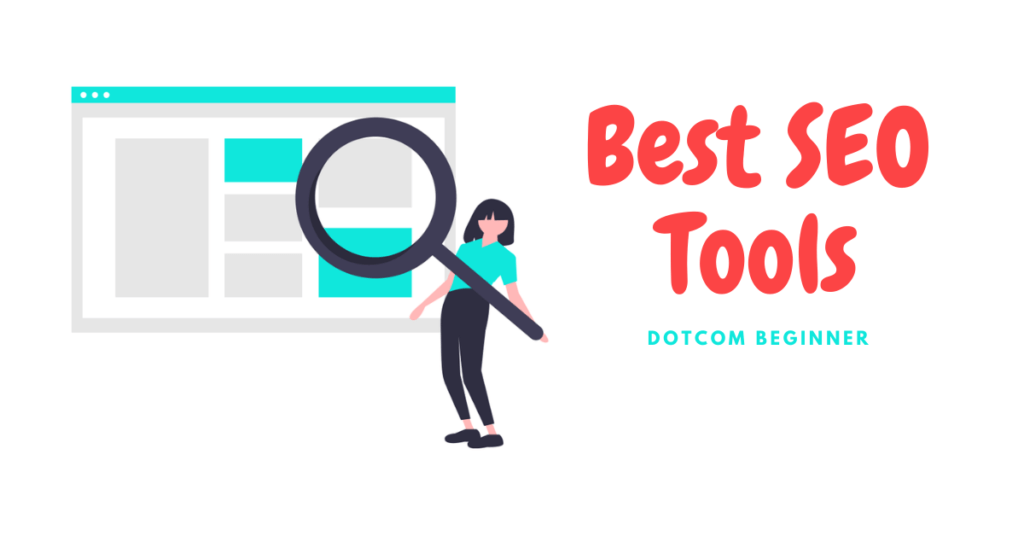Last Updated on January 14, 2023
SEO, or search engine optimization, is a way to make sure that your website shows up higher on search engine results pages. The goal is to get more people to come to your website naturally without having to pay for ads.
For small businesses, SEO is really important. It can help them be more visible online and make it easier for customers to find them. There’s a lot of competition online, so SEO can give small businesses an edge and help them stand out.
However, small businesses often have a hard time with SEO. They might not have a lot of money or staff to invest in it, and it can be hard to keep up with the latest trends. Also, small businesses might have a limited number of products or services, which can make it harder to target different keywords.
Even though it can be tough, small businesses can still do well with SEO if they know the basics and do it right. By taking the time to optimize their website, small businesses can improve their online visibility and attract more people to their sites.
This blog post will walk you through a complete guide to SEO success for small businesses.
Key Takeaways (TL;DR)
- SEO is important for small businesses as it can help them increase visibility and drive traffic to their website
- Keyword research is a vital step in SEO as it helps identify the phrases and words that potential customers use to search for products or services like yours.
- On-page optimization involves optimizing various elements of a website, such as its content, meta tags, and images, to improve the search engine ranking.
- Creating high-quality, relevant, and regularly updated content is crucial for SEO as it helps to attract links, engagement, and brand awareness.
- Off-page optimization is the process of improving the perception of a website by increasing the number and quality of inbound links.
- Local SEO is important for small businesses with physical locations to help them rank well in search engine results for local searches.
- Measuring and reporting on a small business’s SEO efforts is crucial to tracking success and making data-driven decisions.
🌟 Keyword Research
Keyword research is an integral part of SEO because it helps you figure out which words and phrases your target audience is using to look for things online. By finding the right keywords, you can make sure that your website’s content and meta tags are written in the same language as the people you want to reach. This can help your website rank higher in search engine results and make it more visible.
You can do keyword research with a number of tools and methods, such as Google Keyword Planner, SEMrush, Ahrefs, and Moz Keyword Explorer. These tools give you useful information about the number of searches, the competition, and related keywords, which can help you find optimization opportunities.
When selecting keywords, it’s essential to keep your small business’s target audience in mind. Rather than targeting broad, general keywords, you should focus on long-tail keywords, which are more specific phrases that are less competitive and more likely to convert into leads or sales. For example, a small business that sells shoes that are good for the environment might focus on “organic cotton sneakers” or “vegan leather boots” instead of just “shoes.”
To get the best results, you should also make sure that the keywords you choose fit with the website’s goal and the people who visit it.
In addition to long-tail keywords, it’s also beneficial to use a mix of short-tail keywords and general or broad keywords, which will help you target a wider audience and increase the chances of driving more traffic to your website.
🌟 On-Page SEO
On-page SEO is making sure your website is set up in a way that will make it rank higher in search engine results. This includes things like the title that appears at the top of your web page, a short summary that appears below the title, and how you organize the content on your webpage.
Title tags are like the name of your web page that appears in the tab at the top of your browser and in search engine results. They should be short, easy to understand, and include words that people might use to search for your business. For small businesses, it’s a good idea to include your business’s name and location in the title tag.
Meta descriptions are little summaries that appear in search engine results below the title. They should be clear and easy to understand and include words that people might use to search for your business. These descriptions give people an idea of your web page and encourage them to click through to your website.
Header tags are used to organize the content on your web page. They help break up the text into sections and subheadings and should include words that people might use to search for your business. For small businesses, it’s a good idea to use the main topic of your web page as an H1 tag and then use H2, H3, etc., for sub-topics or sections.
To improve your on-page SEO, it’s important to create high-quality, relevant, and useful content. This includes understanding your target audience, researching what words and phrases they’re searching for, and making sure your content addresses their needs and interests. Your content should be easy to read and navigate and include links to other pages on your website and other websites.
It’s also essential to make sure your website is easy to use, looks good, and works well on mobile devices. This will ensure that people visiting your site have a good experience and are more likely to return in the future.
🌟 Technical SEO
Technical SEO is the process of improving a website’s infrastructure and architecture to make it more visible and perform better in search engine results. This includes website structure, site speed, mobile friendliness, and the use of structured data.
Website structure, or architecture, refers to how a website is organized and linked. A well-structured website makes it easy for search engines to crawl and index the site’s pages. Small businesses should aim to have a clear and logical website structure with a hierarchy of pages that is easy to navigate. This can include using a clear menu structure and properly using breadcrumb navigation.
Site speed is another important technical SEO factor, as search engines prioritize fast-loading websites. Slow websites can make it hard for people to use them, and search engines may punish them for it. Small businesses can speed up their sites by compressing images, minifying code, using a content delivery network (CDN), and using caching techniques.
Mobile-friendliness is also a key technical SEO factor, as more and more people access websites on their phones and tablets. A mobile-friendly website is optimized for small screens and touch navigation and is easy to read and use on a mobile device. This could be done with a responsive design, a separate mobile site, or a mobile app.
Structured data refers to the use of tags and code on a website that helps search engines understand the content of the site. This includes using tags like schema markup, which can give information like business hours, location, and contact information. This can help small businesses improve their visibility in local search results.
Google Search Console is a free tool that website owners can use to find out a lot about how well their site is doing in Google’s search results. It can be used to monitor a website’s visibility, track crawl errors, and get notifications of any issues that may affect the site’s ranking. This can help small businesses identify problems that may be hurting their site’s performance and take action to correct them.
🌟 Off-Page SEO
Off-page SEO is the process of making a website more visible and trustworthy by using links from other sites. This includes techniques such as link building and link earning.
Link building is the process of acquiring links from other websites that point to a website. These links can increase the website’s visibility and credibility in search engine results. Common link-building techniques include guest blogging, broken link building, and resource link building. For small businesses, link building can effectively reach new audiences and boost search engine visibility.
In contrast, link building is the process of creating high-quality, useful content that other websites will naturally want to link to. Small businesses can get links from other sites that find the content useful by making useful things like articles, infographics, and helpful tools.
Social media can also be a powerful tool for small businesses to improve SEO. Small businesses can increase their visibility and reach and get more people to visit their websites by making and sharing high-quality content on social media platforms. Small businesses can improve their search engine rankings and link profiles by interacting with users on social media and getting them to share and link to their content.
By creating and verifying a business page on a local business listing like Google My Business, small businesses can make sure that their location, hours of operation, and contact information are correct and easy for users to find. Small businesses can also improve their reputation and search results in their area by asking customers to leave reviews.
🌟 Local SEO
Local SEO is making sure your website and online presence are set up in a way that makes it easy for people in your area to find you. The goal is to show up higher in local search results so that more people in your area can find and visit your business.
This is especially important for small businesses because it helps them connect with potential customers in their local area. For example, if someone is searching for “pizza delivery near me,” they’re probably looking for a local business that can provide that service. By optimizing your website and online presence for local search, you can increase search results and connect with people looking for your services.
One way to improve your local SEO is by using Google My Business. It’s a free listing service that Google offers to small businesses so they can let customers know their name, address, phone number, business hours, and other important information. By creating and verifying a Google My Business listing, you can make sure your information is correct and that it shows up in Google Maps and search results when someone searches for related keywords.
Another way to enhance your local SEO is by adding schema markup to your website. It’s a type of code that provides search engines with additional information about your business, such as location, hours of operation, and contact information. This can help improve your visibility in local search results.
Another important aspect of local SEO is encouraging reviews and testimonials. Having positive reviews and testimonials on online directories like Google, Yelp, and TripAdvisor can help your business show up higher in local search results and build trust and credibility with potential customers.
🌟 Measuring and monitoring SEO
Tracking and measuring SEO progress is important if you want to know how well your SEO efforts are working and how to improve the search engine rankings of your website. By keeping an eye on how well your website is doing, you can find areas where it could be better and make changes to your SEO strategy. This can help you stay ahead of the competition and increase your visibility to potential customers.
You can use several tools and techniques to track and analyze your SEO progress. Some popular ones include:
- Google Analytics for tracking website traffic and understanding visitor behavior
- Google Search Console for insights on search performance, including keywords and clicks/impressions
- SEMrush, Ahrefs, and Moz for data on keyword rankings, backlinks, and organic search traffic.
In addition to these tools, you can also use web analytics data to make informed decisions about SEO. For example, you can use data from Google Analytics to find the pages on your website that get a lot of traffic and the keywords that bring people there. You can also use data to find pages with a high bounce rate or a low average time on the page, which may suggest that the content on those pages is not relevant or engaging to visitors.
You should be able to analyze the data and spot trends and patterns if you want to use web analytics and other data to improve SEO. You should also use this information to figure out what parts of your website need fixing and make changes to your SEO strategy.
Some ways to use data to improve SEO include:
- identifying high-performing keywords using data from tools like Google Search Console and SEMrush
- Analyzing backlink data with tools like Ahrefs and Moz
- Optimizing content by using data from Google Analytics to identify high-traffic pages
- Identifying technical issues using data from tools like Google Search Console
By constantly tracking and measuring SEO progress and analyzing data, you can make decisions based on the data to improve your website’s search engine rankings and bring more people to your site.
✍🏽 Conclusion
SEO, or search engine optimization, is really important for small businesses that want to be more visible online and get more customers. By understanding the basics of SEO, small businesses can improve their search engine rankings and drive more traffic to their website.
To start, small businesses should do keyword research to figure out which words and phrases are best for their industry and audience. Then, they can focus on on-page optimization, which includes things like making sure the title tags, meta descriptions, and header tags are set up correctly and that their website has high-quality, relevant content. Technical SEO ensures the website is technically sound and user-friendly and optimized for things like site architecture, speed, and mobile responsiveness. Off-page SEO includes building links and getting links from other sites. Social media can be used to improve SEO. Local SEO involves optimizing your Google My Business listing and other local directories and using schema markup, reviews, and testimonials to rank higher in local search results.
It’s important to monitor and measure SEO progress so that you can understand how effective your efforts are and make informed decisions for the future. You can use tools like Google Analytics, Google Search Console, SEMrush, Ahrefs, and Moz to track website traffic, keyword rankings, and backlinks and identify areas for improvement.
In short, SEO can be challenging for small businesses, but by following these tips, they can improve their search engine rankings and get more people to visit their websites. If you want to learn more about SEO, you can check out resources like Moz, Ahrefs, and Google’s Webmaster Central Blog. And don’t forget to measure and track your progress often to see how SEO is helping your business.





